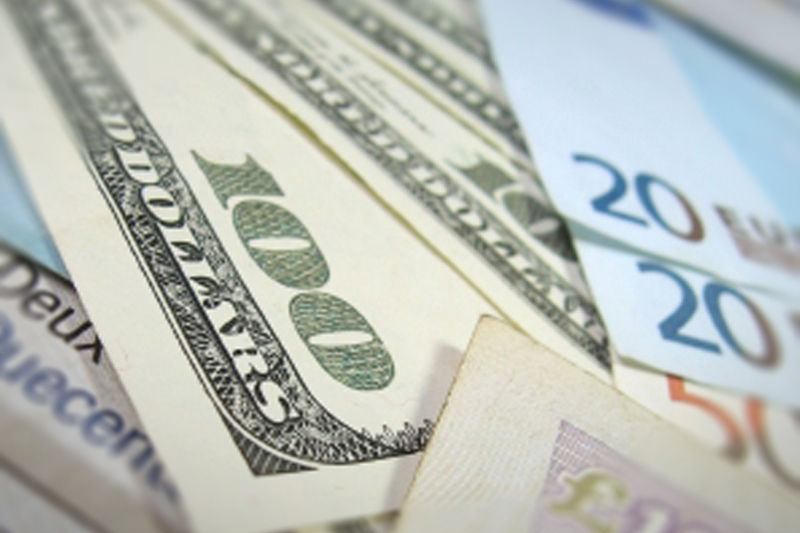Investing.com -- EUR/USD inched down on Tuesday extending losses from the previous two sessions, as investors traded cautiously ahead of the release of the Federal Reserve's minutes from its January meeting on Wednesday afternoon.
The currency pair traded in a tight range between 1.1124 and 1.1193, before settling at 1.1141, down 0.0011 or 0.10% on the session. The euro has closed lower against the dollar in each of the last three sessions and four times in the last five trading days. Over the last month of trading, the euro is still up by more than 2% against its American counterpart.
EUR/USD likely gained support at 1.0538, the low from December 3 and was met with resistance at 1.1496, the high from Oct. 15.
Investors continued to digest dovish comments from European Central Bank president Mario Draghi on the strong possibility that its Governing Council will approve further easing measures when it holds its next monetary policy meeting in March. Speaking before the European Parliament's Economic and Monetary Affairs Committee in Brussels on Monday, Draghi indicated that the ECB will not show reluctance to act if persistent financial market turmoil or low energy prices continue to impact inflation expectations.
Last month, an ECB survey of 57 economists showed that annual inflation expectations for 2016 fell to 0.7%, down 0.3% from previous forecasts three months earlier. While forecasters anticipate that inflation in the euro zone will increase in each of the following two years, it is still expected to remain below the ECB's targeted goal of 2% through the end of 2018.
Crude prices have hovered around 12-year lows over the last two months, while euro zone banking stocks have tumbled in recent weeks amid concerns related to a rout in the high-yield sector and the ramifications of the adoption of negative interest rate policies at major central banks across the continent.
"We will examine the strength of the pass-through of low imported inflation to domestic wage and price formation and to inflation expectations. This will depend on the size and the persistence of the fall in oil and commodity prices and the incidence of second-round effects on domestic wages and prices," Draghi said.
"In light of the recent financial turmoil, we will analyze the state of transmission of our monetary impulses by the financial system and in particular by banks. If either of these two factors entail downward risks to price stability, we will not hesitate to act."
When the Federal Open Market Committee releases the minutes from its January meeting on Wednesday afternoon, investors could receive further indications on the pace of tightening the U.S. central bank will embark on over the next several months. While Janet Yellen testified last week that it is unlikely that economic conditions will force the FOMC to cut interest rates, the Fed chair did not take negative interest rates off the table.
In late-January, the Bank of Japan spooked global markets by pushing rates below zero for the first time in history. With the ECB's deposit rate already in subzero territory, it marked the first time on record that two of the three top central banks in the world offered negative interest rates simultaneously.
Any rate hikes by the Fed this year are viewed as bullish for the dollar, as foreign investors pile into the greenback to capitalize on higher yields.
The U.S. Dollar Index, which measures the strength of the greenback versus a basket of six other major currencies, gained more than 0.15% to an intraday high of 97.00, before closing at 96.90. The index is still down approximately 2.8% since the BOJ's surprising decision.
Yields on the U.S. 10-Year and the Germany 10-Year each rose by three basis points to 1.78% and 0.26% respectively.
